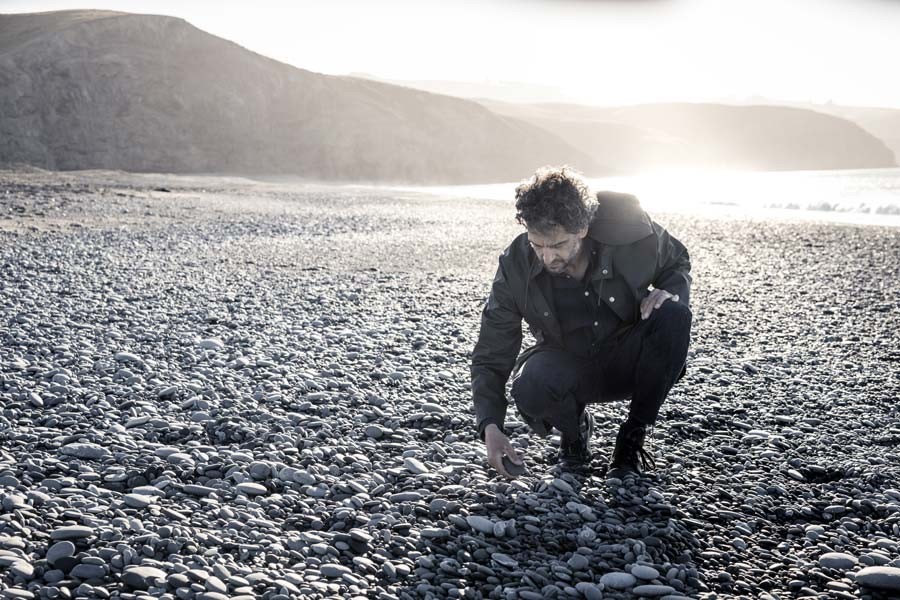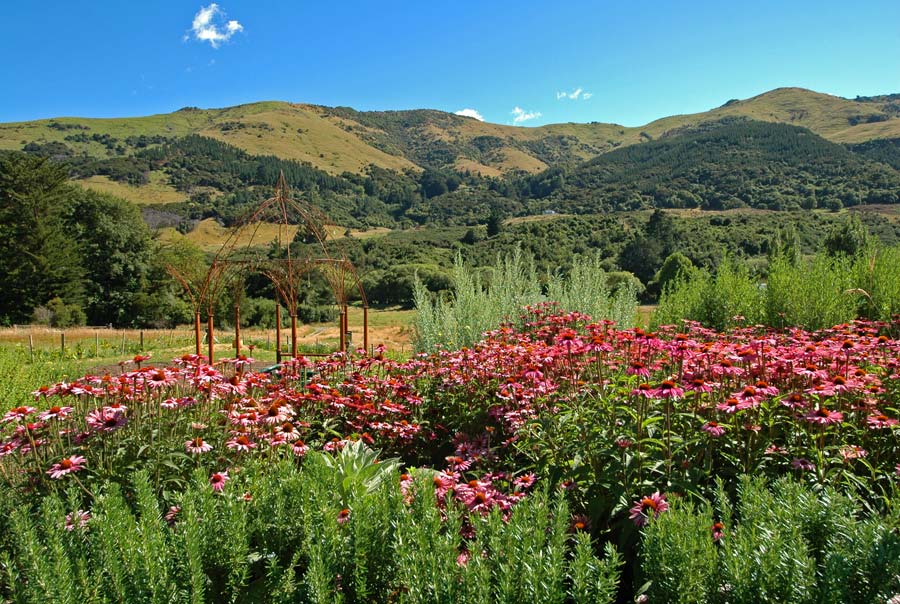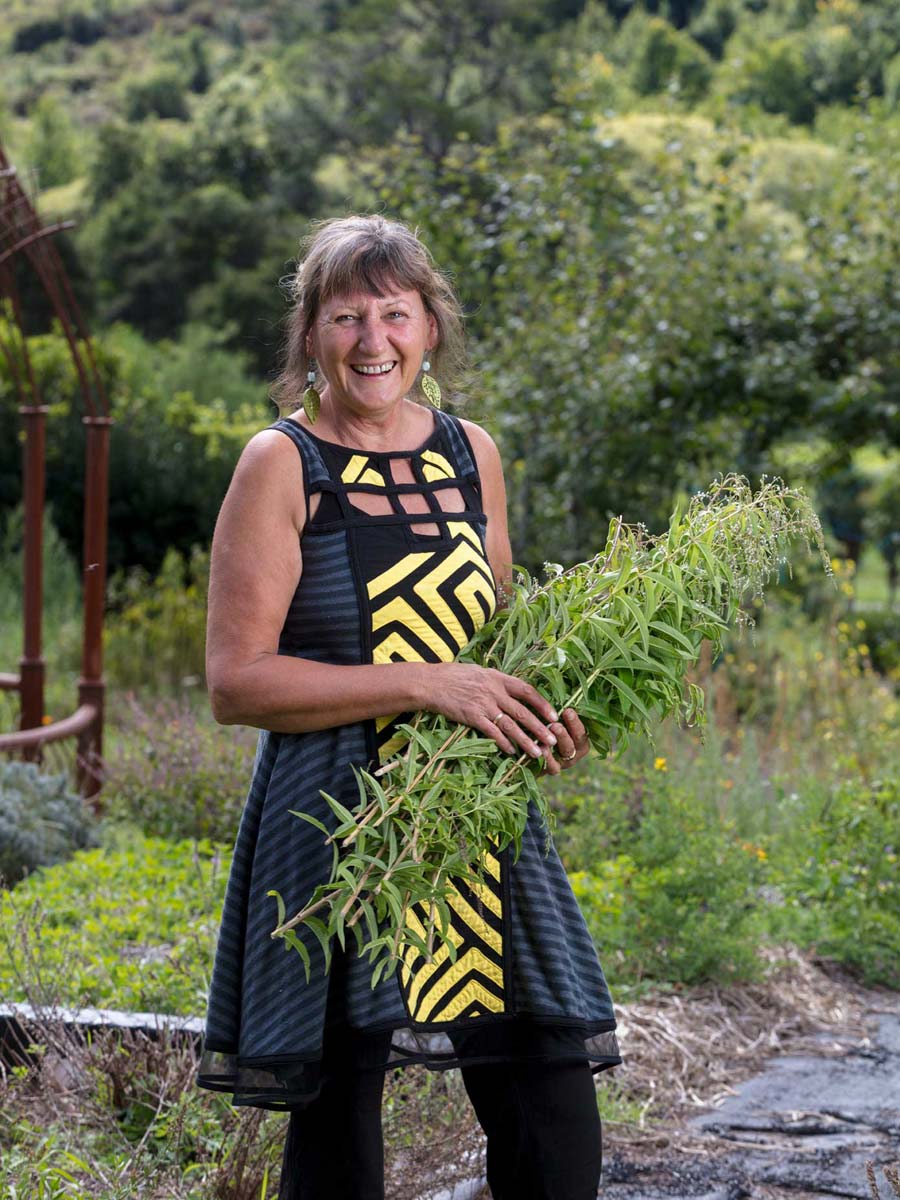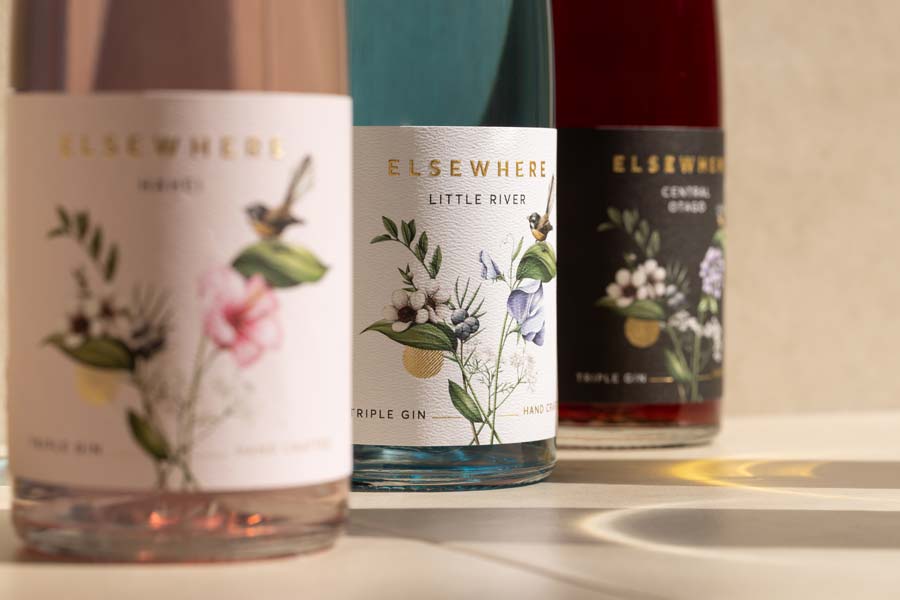Spirit of the land
It’s not eye of newt and toe of frog but some very magical ingredients go into Elsewhere Gin’s range. Forager-in-chief Mark Rose gathers the water, geology and botanicals of an area and captures their essence in a bottle.
Early on a calm morning, Mark and Zoë Rose of Elsewhere Gin, with their children Luca and Otto in tow, are scouring Birdlings Flat, near Christchurch, for pebbles, agates, driftwood and bits of seaweed.
So far so normal. What happens next isn’t. Mark takes the results of their foraging, including some seawater, and adds it to botanicals harvested from the nearby Okuti Valley to distil a gin that captures the essence of the area. The seawater amplifies the flavours and adds depth to the gin. The pebbles and agates replace the boiling stones or glass spheres usually used in distillation, adding their own minerals to the mix.
The gathering was done in April. The resulting sky-blue Little River Gin now sits alongside North Canterbury Gin, Central Otago Gin and several other such “regional expressions” on Elsewhere Gin’s website.
Mark is a former winemaker of 25 years who decided it was time to use his trained palate for something different. With his wines, he always strived to create a liquid that tightly reflected the terroir of the region. A celebration of living in this world right there in your glass. Why not do the same with gin?
Over time he has perfected the technique. Foraging is best done in the early morning when the plant aromatics are at their peak and fresh, before the heat of the day volatilises them.
For the Little River forage, the family stayed at the Little River Campground and Manaia Native Habitat. The campground has 5 hectares of bush to explore and from there they foraged tarata resin, kanuka and manuka blossoms, kawakawa fruit and water from the river.
They also visited family friend, herbalist and naturopath Valmai Becker at nearby herb garden Phytofarm. The visit was timed for the harvest and into the mix went lemon verbena, German chamomile, lemon thyme, bay leaf, licorice, holy basil, lemons and sweet marjoram. And some aquifer water.
In all cases the wild and farmed botanicals are immediately placed into glass jars with neutral spirit and the gathered water to capture the full array of aromatics.
For all of Elsewhere Gin’s regional expressions range, the process is the same. The family head off to visit friends across the country and go to remote areas for a forage. Using excise-paid neutral spirit, Mark makes a distillate of each botanical right there in the field.
He takes these “quintessences” to the distillery he is working with, currently Humdinger in Geraldine. Here, the foraged water and botanicals are interlaced in the distilling run with classic gin botanicals such as Himalayan juniper and Italian juniper, German-grown angelica archangelical, and picante coriander, an Aotearoa-grown variety with an intense woody citrus aroma.
Mark’s pioneering approach to gin-making has attracted serious attention. Matt Barnsley of Christchurch hospo player Inkster Co. wanted a gin specifically for the group’s swanky Austin Club so Mark took the staff foraging to Little Akaloa on a stormy Monday morning. They found plenty of banana passionfruit growing wild and that became the centrepiece of the gin, augmented by foraged horopito peppercorns, kawakawa and kombu.
Since then Mark has created gins for The Juniper Collective (horopito, celery pine, manuka blossom, snow totara and cherry blossoms from Arthurs Pass), O.G.B (wild gooseberries and miro berries with water from Aōraki-fed Lake Pukaki) and others.
One collab was with Kings Truffles in Waipara. Mark infused 20 litres of North Canterbury Gin with 1kg of perigord truffles, along with saffron, wild cherries and violets to produce truffle-rich gin with endless flavours.
And coming is a bespoke gin for Otahuna Estate in Tai Tapu. The year-long process will include gathering botanicals from the estate’s vast collection as they come into bloom.
The small-batch nature of Elsewhere Gin’s process means a limited supply of each one. No problem – Mark and the family will often go back to their favourite places to gather botanicals for further batches. But just like vintage wines, each batch will express the character of different seasons and years. No two the same.
Why blue?
The final stage before filtering and bottling Elsewhere’s Little River Gin is to infuse it with butterfly pea flowers, the only edible flower in the world that can accurately reflect pH. The blue/purple delphinidian anthocyanins in the flowers interact with the high pH of the water gathered from the river and from the Phytofarm aquifer. Add a splash of tonic to the gin and another reaction produces the lavender blush of early mornings at Birdlings Flat.

Mark Rose


Valmai Becker
